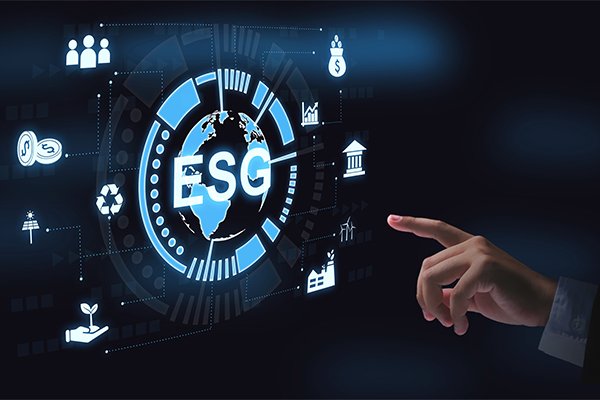ESG (environmental, social, and governance) trends are fundamentally reshaping how supply chains are managed in 2025. According to a PwC survey, 86% of executives now directly align their supply chain strategies with ESG goals, and 79% report seeing tangible returns from ESG-related digital investments. Far from a coincidence, this shift reflects changing business priorities driven by regulatory demands and rising consumer expectations.
Supply chain transparency has become essential. More than 60% of senior executives now request ESG data from their suppliers, and nearly half have integrated ESG criteria into their onboarding processes. With Scope 3 emissions accounting for roughly 75% of a company’s total carbon footprint, end-to-end visibility is no longer optional—it’s critical for achieving environmental compliance. But the benefits go beyond regulation: products making ESG-related claims saw 28% cumulative growth over five years, compared to 20% for those without.
This guide explores why ESG matters in modern supply chain operations, the barriers to achieving full visibility, and how to implement ESG practices effectively across your supplier network. With over half of businesses now building cross-functional ESG teams to enhance resilience, staying ahead of these trends is becoming essential for reducing risk and securing long-term, sustainable growth.
Why ESG Matters for Modern Supply Chain Management
The role of ESGin supply chain management has evolved dramatically in recent years. Once viewed as a corporate buzzword, it has become a strategic cornerstone, shaping how brands engage with consumers, investors, and other stakeholders. ESG is no longer just an investor concern; it’s now a decisive factor in consumer preferences and loyalty.
Consumer Expectations and Brand Loyalty
Modern consumers, especially Millennials and Gen Z, are increasingly loyal to brands that demonstrate commitment to sustainability, social responsibility, and ethical practices. Research shows that many are willing to pay more for products aligned with their values, and their support often persists despite market fluctuations or price changes. For these audiences, ESG is not just a differentiator—it’s an expectation.
Business Performance and Competitive Advantage
Incorporating ESG into supply chains also delivers measurable business value. Companies with strong ESG performance often report higher profit margins (1–3 percentage points above average) and enjoy stock market premiums exceeding 10%. Enhanced ESG practices contribute directly to supply chain resilience, improved risk management, and long-term sustainable growth.
Employee Engagement and Compliance Pressures
The influence of ESG extends internally as well. Around 40% of Millennials say ESG factorsinfluence their choice of employer. Employees who are proud of their company’s ESG commitments tend to be more engaged, driving better customer experiences and stronger brand advocacy.
As regulatory expectations rise—particularly across Europe and North America—supply chain due diligence has become a non-negotiable business requirement. 74% of companies report being directly affected by ESG-related due diligence laws. By prioritizing responsible suppliers and enforcing ESG standards across their networks, businesses can reduce environmental and social risks, protect their reputation, and meet growing expectations for accountability.
Best Practices for Implementing ESG Strategies
Effectively implementing ESG strategies requires a structured approach that balances stakeholder expectations with regulatory demands. Supply chain mapping is the foundation of any ESG initiative, providing visibility into supplier locations, operations, and existing practices before setting measurable goals.
1. Establish a Solid Data Baseline
Data collection is the critical first step in establishing an ESG baseline. This process involves gathering information across departments to calculate emissions using either supplier-specific or spend-based methodologies. For a comprehensive view, track metrics such as:
- Energy consumption
- Waste generation and recycling rates
- Supplier compliance
- Percentage of responsibly sourced materials
Tip: For deeper insight into multi-tier supply chain mapping, explore sematic-vision.com—a powerful tool for identifying risks and increasing transparency across your entire supplier network.
2. Engage Suppliers and Set Clear Expectations
Once baseline data is in place, actively engage suppliers by clearly communicating your ESG expectations and compliance standards. Research shows that companies working with more responsible suppliers tend to outperform competitors in long-term stock returns. To embed ESG into your sourcing practices, integrate relevant metrics into RFPs and onboarding processes, and require third-party certifications like ISO 14001 or SA8000.
3. Strengthen Supplier Management
To strengthen supplier management:
- Conduct regular audits focused on health and safety, labor conditions, environmental compliance, and responsible sourcing.
- Include ESG-related KPIs directly in supplier contracts to ensure accountability.
- Implement continuous monitoring systems that flag potential ESG risks in real time.
4. Apply Circular Economy Principles
Adopting circular economy principles is another key strategy. This means designing out waste and keeping materials in use for as long as possible. According to the Circularity Gap Report, applying circular principles across five key sectors could reduce global greenhouse gas emissions by up to 9.3 billion tons by 2050.
5. Leverage Technology for Scalable ESG Management
Finally, leverage technology to streamline ESG management. By 2025, most ESG reporting will be automated through digital platforms that collect and analyze real-time data. AI-driven tools can screen supplier information against ESG indicators, enabling teams to move from reactive risk management to proactive, strategic decision-making.
Conclusion
As we approach 2025, ESG has evolved from a voluntary initiative into a business necessity—one that directly impacts compliance, competitiveness, and long-term growth. Companies that invest in supply chain visibility, engage responsible suppliers, and leverage technology for data-driven ESG management are better positioned to build resilience, drive efficiency, and strengthen stakeholder trust.

